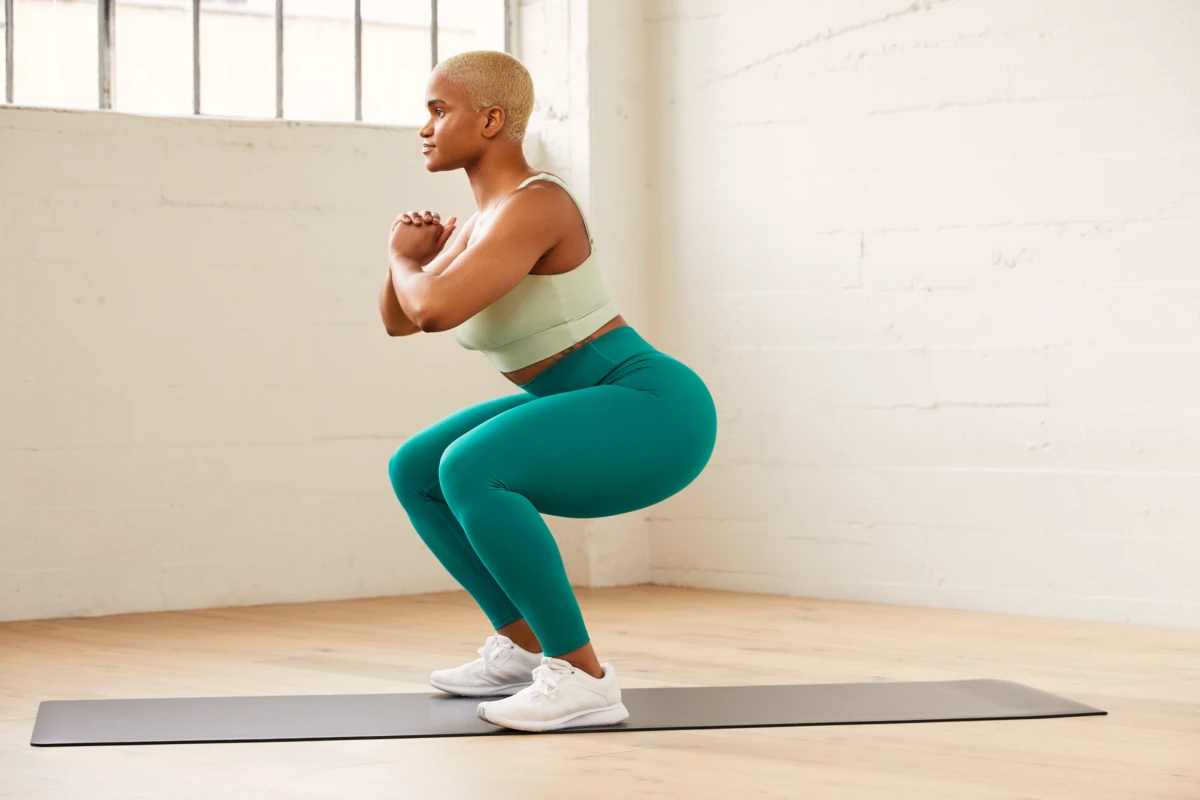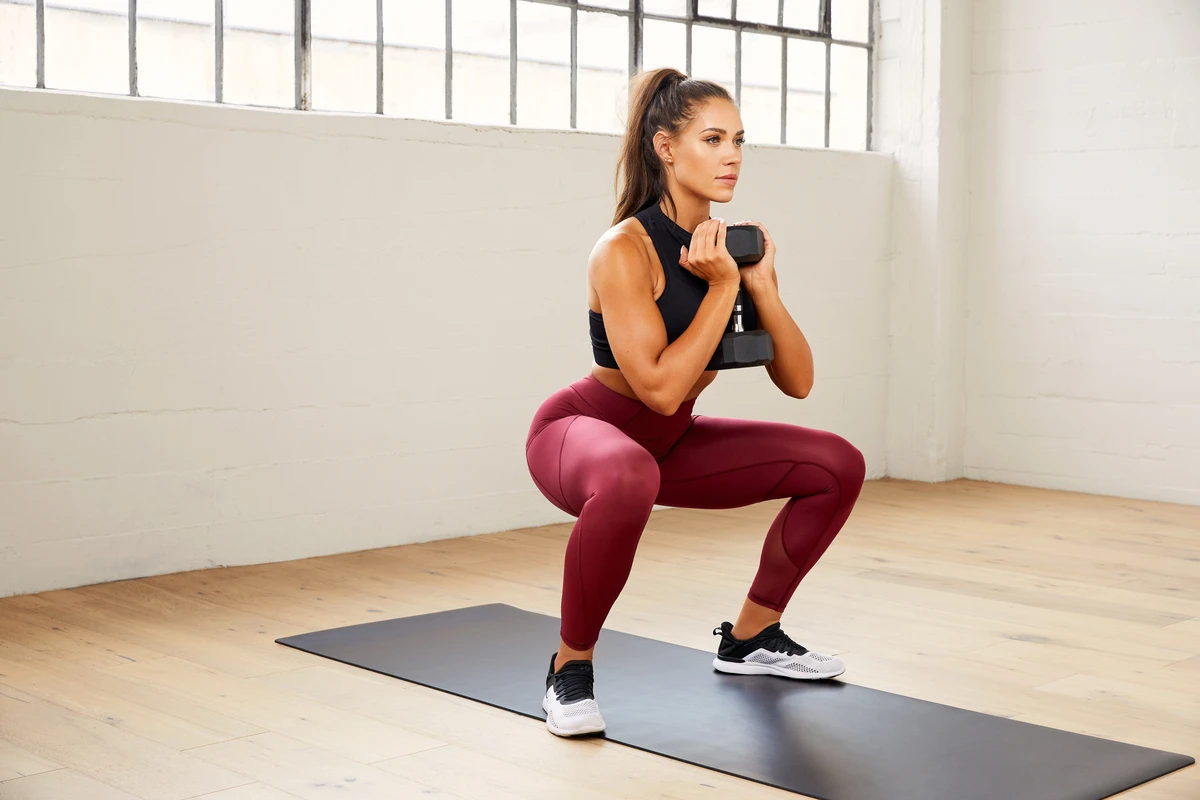Why Butt Winks Could Be Ruining Your Squats
Butt wink might sound cheeky and fun but it’s really not. Avoid injury and progress faster by learning how to prevent this squatting mistake.

May 30, 2022 - Updated September 26, 2024

As cheeky as the term sounds, “butt wink” has become a common topic in conversations about squats. Knowing how to prevent it can save you a lot of back pain, help you avoid serious injury and speed up your progress by making sure you’re getting the most out of every squat.
Hang on, what is butt wink?
When doing any exercise, it’s important to get your form right to make sure you are engaging the correct muscles and reduce your risk of injury.
When squatting with additional weight, such as a barbell, dumbbells, or a weighted goblet squat, butt wink is a common form error, referring to your lower back rounding and your pelvis tucking under or “winking” at the bottom of your squat. This means your pelvis goes into a posterior pelvic tilt.
When a squat is performed correctly, your spine should remain neutral, or in a slightly curved position like trainer Anissia in the picture below, as opposed to hunching over.
Knowing how to prevent butt wink is essential if you want to protect your back and spine as you add weight, and to maximise your muscle power throughout the movement to fast-track you towards the results you want.

Why is butt wink a bad thing?
So your back starts to tuck under at the bottom of your squat - so what?
If your back begins to round in a bodyweight squat, this isn’t good form but the risk of injury isn’t so high. But when you start adding extra load and that weight is no longer supported properly, this can put excessive pressure on your spine.
This pressure can lead to back pain, or even injuries such as a slipped disc. If you’ve ever had a slipped disc you’ll know how painful this can be, while ANY back pain can cause a significant setback in your fitness journey.
Research published in the Strength & Conditioning Journal explains that your spine should remain in an upright position throughout the whole squat, and any change in alignment in one section of your spine can cause compensation in another section.
The researchers highlighted that stability during your squat is enhanced with muscular stiffness of the muscles around your lumbar spine. However, when you fail to stiffen your lower back muscles and have a poor lift, you increase your risk of injury as your overloading your spine and back tissue. The more you do this, the greater the risk of injury.
When the neutral position of the spine is lost, you’re also limiting your own progress when it comes to adding weight and building muscle and power in your squats.
Moral of the story - if you want to avoid injury and maximise your development, it’s important to maintain a neutral spine when doing squats.

What causes butt wink? Is it preventable?
The rounding of your back at the bottom of a squat can be caused by several factors. Sometimes, people just don’t know how to squat properly, and learning the correct form is an easy fix!
Other simple fixes for many people include starting with your feet a tiny bit wider than hip distance apart, not squatting too deeply, or doing bodyweight squats until you have perfected your form.
For others, butt wink can be an anatomical issue, caused by things such as your height, the width of your hips or the depth of your hip sockets. If it’s an anatomical issue you can’t change, it’s important to learn where your ideal squat depth is before you start to compromise on your form - this sweet spot can be slightly different for everyone. Looking in a mirror or getting someone else (preferably a professional trainer) to watch you and correct your form can help!
Butt wink can also be caused by a lack of mobility or stability. To squat with good form, you need mobility in areas like your hips, knees and ankles, as well as stability in your core, back and knees.
If you’re having trouble squatting without your lower back curving, it pays to see a professional physio. Issues with mobility and stability can be improved with specific exercises, depending on which area of your body is the cause.
Tips to prevent butt wink and squat with good form
Start with your feet hip distance apart or slightly wider. As you start to squat, make sure your knees are tracking out over your toes, not bending inwards. Keep your back nice and straight, avoid hunching out, and look straight ahead. If your back starts to round, push through your heels and return to the starting position. Remember, getting your form right is ALWAYS better than doing a deep squat with poor form. As you stand, make sure you push through your heels, rather than pushing through your toes for stability. You don’t want your heels lifting off the ground.
If you’re new to squats, start with your bodyweight until you feel confident with your form. Then you can start adding light weights before progressing to heavier weights. You don’t want to injure yourself!
It can help to look at yourself in a mirror when doing squats to make sure your back stays in a neutral position.
If you’re in a gym, ask a trained staff member to check your form.
Doing a proper warm-up and some glute activation exercises before your workout can also help to prepare your body and engage the muscles.
Make sure your workout routine includes other strength exercises for your core and lower body.
If doing a squat - with OR without extra weight - causes you to feel discomfort or pain (and we don’t mean just the burn of your muscles), definitely see a professional physiotherapist or other sports healthcare provider for advice.
Is maintaining a neutral spine something you have ever struggled with in your squats? Let us know in the comments!

Erin is a writer and editor at Sweat with years of experience in women's publishing, the fitness industry, media and tech. She's passionate about the power of movement, and you can often find her on a yoga mat, a hike, a dance floor, in the ocean or the gym.
* Disclaimer: This blog post is not intended to replace the advice of a medical professional. The above information should not be used to diagnose, treat, or prevent any disease or medical condition. Please consult your doctor before making any changes to your diet, sleep methods, daily activity, or fitness routine. Sweat assumes no responsibility for any personal injury or damage sustained by any recommendations, opinions, or advice given in this article.
Fitness